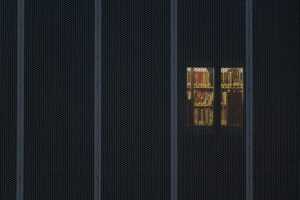6608692809 in Digital Systems
Let’s get practical. Systems need unique strings—tendigit numbers are common as IDs, API references, or placeholders. For example:
In telecom, 6608692809 resembles a U.S. phone number. It isn’t formatted traditionally, but it fits the number of digits. Maybe it’s a temp contact or a masked ID. In database systems, such numbers could act as surrogate keys—simple, numeric ways to keep track of records without feeding too much context into the value. In machine learning projects, especially data labeling, dummy numbers like 6608692809 sometimes act as keys linking datasets or triggering specific behaviors.
In these environments, no digit is random. Systems engineers might hardcode values for testing. Or assign certain numbers as soft identifiers—noticeable to developers but meaningless to end users.
What Is 6608692809?
On paper, it’s just a tendigit number. But numbers take on weight when they show up repeatedly. Think of 6608692809 as a data point. It could be a placeholder, a reference ID, or even a phone number. In a dataheavy world, such numbers can be markers of something bigger—channels, identifiers, or patterns we’re meant to notice.
If you’re in tech, you might recognize a string like this from debugging logs or internal systems. If you’re more on the spiritual side, repeating number patterns might feel like signs. There’s no universal definition here, so the meaning hinges on the context in which 6608692809 shows up.
Occult and Numerological Takes
Now for the less technical angle. Numbers have fascinated cultures for centuries. Numerology assigns meaning to digits—especially when they repeat or appear in sequences. While 6608692809 doesn’t fall into classic “angel numbers,” it can still be analyzed.
Break it down: 6 = balance, harmony 0 = potential and choice 8 = power and abundance 9 = completion, wisdom 2 = duality, partnership
If you add the digits (6+6+0+8+6+9+2+8+0+9), you get 54. Break that down further (5+4), and you get 9 again. In numerology, 9 typically stands for endings that lead to new beginnings, wisdom gained from life experiences, and a cycle wrapping up.
Is that meaningful? Depends on your belief system. But people intuitively make connections. That’s how numbers like 6608692809 start to feel personal.
Seeing 6608692809 Often?
Frequency matters. If you’re seeing the number again and again, question where and how:
On your call log? Online ad snippets? Service ticket numbers? Street signs or invoices?
You could be conditioned to notice it after seeing it once—it’s called the BaaderMeinhof phenomenon, or frequency illusion. Your brain flags the number as important, so you spot it more often. It’s not magic—it’s psychology. But the effect feels very real.
The Practical Use Case
There’s a clean utility to numbers. People track things better when tagged with numbers than with words. 6608692809 might just be:
A tracking number for a package or document A customer support ID A verification placeholder in an app test A specific product or campaign code
So if you’re asking, “What does 6608692809 mean?”—pause and check your context. In 90% of cases, it’s a temporary ID or reference.
User Behavior and Pattern Recognition
Humans spot patterns, even in randomness. When we attach meaning to a number like 6608692809, we’re doing what we always do: trying to map chaos into order. Digital systems often don’t embed meaning in their numbers—but minds do.
Why remember a tendigit sequence? If it stood out visually, or came during a strange moment, your brain locks it down. That’s where interpretation kicks in—technical, personal or spiritual.
Should You Act on 6608692809?
Not unless you know where it came from. If it’s in your call log and you don’t recognize it, consider a reverse lookup. If it’s part of a service slip, associate it with that event and nothing more. And if it keeps showing up and you’re someone who tracks synchronicities, maybe jot down when and where it appears.
Just remember—act based on data, not assumption.
Final Word
6608692809 isn’t magical. But seeing it—or any number—on repeat isn’t always random either. It can mean you’re interacting with a system designed to push that number into view, or just that your brain tagged it for attention. Read the context before you assign meaning. Patterns matter—but so does logic.







